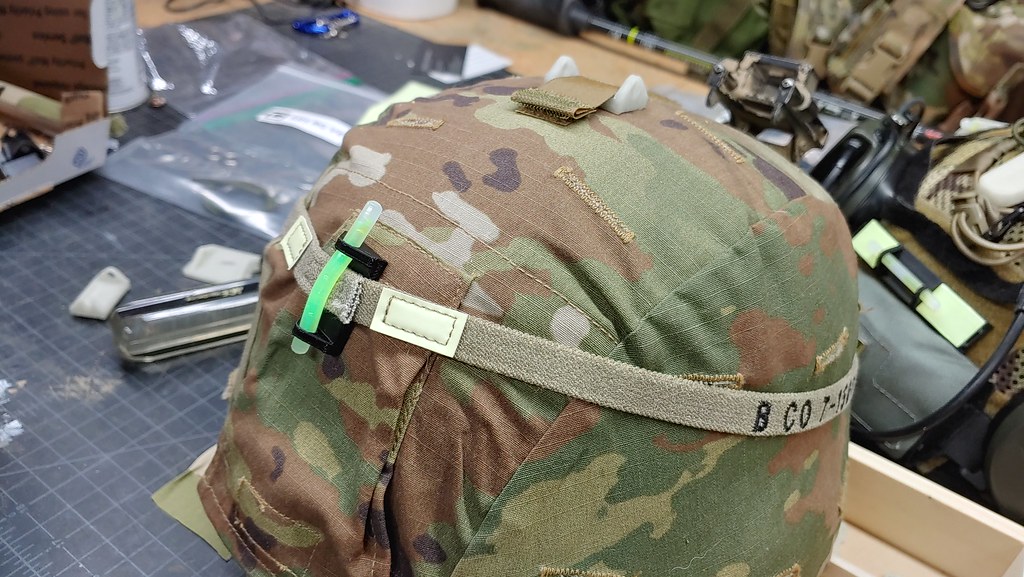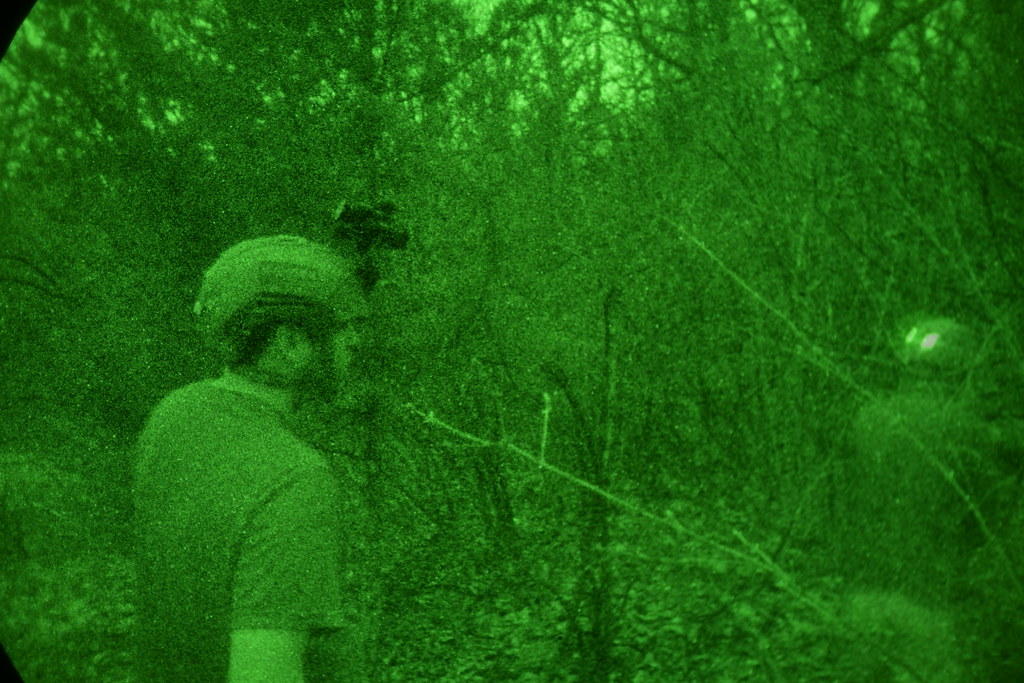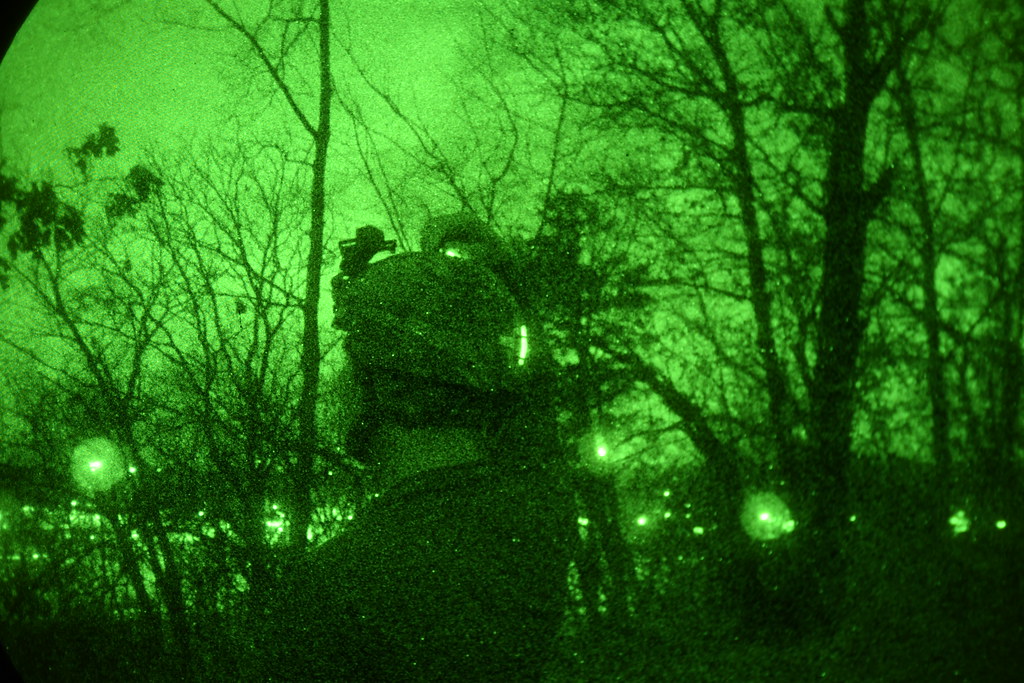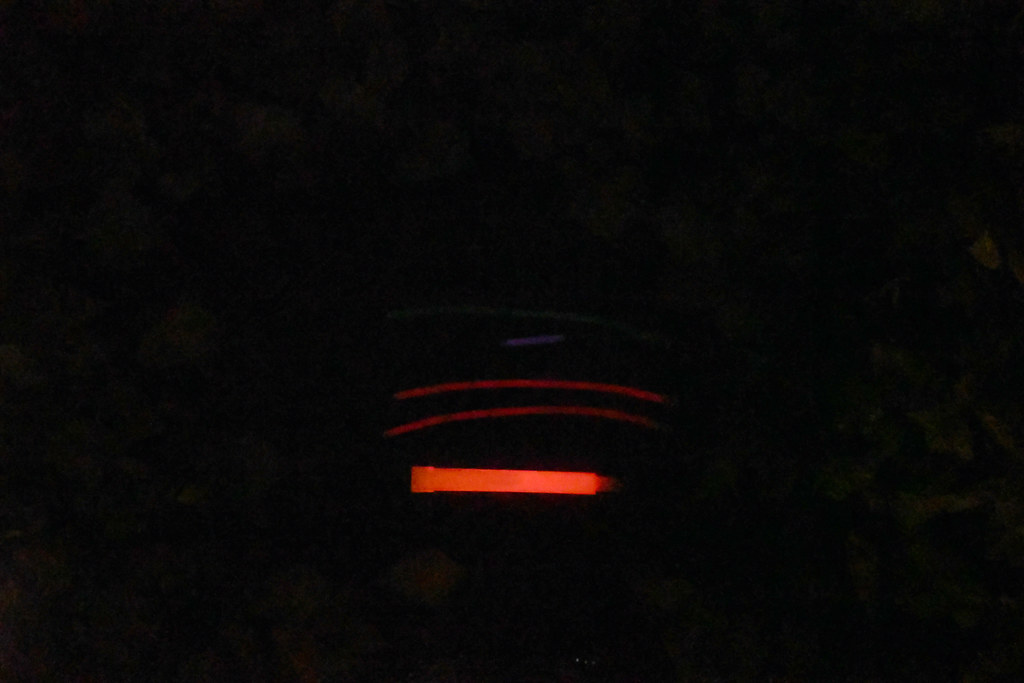Here at CWG we love lightsticks. Glow sticks, Cyalumes, whatever you call them, they are just neat, but we also use them a lot because we just do training and landowners, residents, and local fire protection districts don't like it when you set the training ranges on fire.
If you come to a CWG event like Swift Fox, you'll be loaned or given some stuff, like little bags of mini lightsticks for marking trails and campsites, and a few Cyalume flare-replacements.
"Minis?" "Flares?" Read on for more about all the various glowing products there are.
Sizes, Types, Runtimes, etc.
There are lots of versions and variants of many products, and while I am sure Cyalume has a neat Powerpoint explaining it all, they sure won't share with us.
So, just the "lightstick" products (they make some other chemical light up things) and with some cross-brand info:
Colors
Much like tritium, the phosphors have varying output. I don't have a solid list but my impression is, brightest to least:
- Yellow
- White
- Green
- Orange
- Blue
- Red
- Pink
IR is only made by Cyalume itself AFAIK, and is hard to put on the brightness scale but seems plenty bright, similar to the yellow/green range, through night vision, but has no visible output so... not really a 1:1 comparison.
I think Cyalume doesn't make pink. it is often identified just by colored stickers which look like (or may be SOLD AS) red. It's not. They also look closer to purple to my eye, but it's called Pink.
Colors when illuminated have no obvious relationship to colors when not snapped. If it matters what color a lightstick is, DO NOT take it out of the wrapper. There is no marking ON the stick and the color of a non-cracked stick has a very tenuous relationship to the glow color. The chemistry is what it is, so these colors for the knockoff minis shown are typical but... I wouldn't try to memorize, this is just for fun:

Left to right, lit colors: Yellow, Orange, Blue, Aqua, Lavender, Violet
| Passive | Lit |
|---|---|
| Yellow | Yellow |
| Orange | Orange |
| Clear | Blue (IR also looks clear un-snapped) |
| Yellow-green | Aqua (but also can be... yellow-green!) |
| Pink | Lavender (did not come through in the camera, but I promise: lavender) |
| Red | Violet |
I'll add more as I find additional colors like red.

Sizes
- .09 x .79" (2.2 x 20 mm) - Sizes from here to .177" diameters are mostly used for fishing
- .1 x 1'" (2.5 x 25 mm)
- .118 x 1" (3 x 25 mm)
- .138 x 1.18" (3.5 x 30 mm)
- .157 x 1.5" (4 x 37 mm)
- .177 x 1.5" (4.5 x 37 mm)
- 0.20 x 1.0" (5 x 25 mm) (.20 dia. is often specified as .197") - Cyalume USGI standard, IR and colors
- 0.20 x 1.5" - Alternative Cyalume and Lumistick size, no IR in this size
- 0.20 x 2" (5x50 mm)
- 0.25 x 1.5" f - Fatter, used in Marco dispensers and refills
- 0.25 x 2"
- 0.20 x 8" - Party or Bracelet or so on, other novelty assemblies or accessories may be in the box
- 4" — Never seen one, but NSN milspec Cyalume product in the same foil packaging as the 6", same shape of light, with the hook and all, seems the same diameter I think, just shorter.
- also 4" – Don't have one now, not sure of diameter but close to 6" size, just shorter and straight cylinders with rounded ends. These are always low quality, often don't all light up, or light brightly. Usually have a thicker ring around one end with a loop but often not fitted so falls off, can't be used to hang it without glue or tape to retain the ring.
- 6" - The standard size, tapered, has become smoother over the decades but still faceted at the small end, transitioning to round, with a hook or loop at the smaller end and a round cap at 0.70" diameter. 8" is the overall length to the tip of the hook Mostly sold individually foil wrapped but bulk packs for special purposes are available. There are also 6" length ones that are shaped and built like the 4" ones.
- 0.70 x 8" — Flare Replacements — 8" overall, but a rounded-end cylinder of 0.70" diameter over the whole length. No hook. Taped-on wire feet. Can be removed but be careful and you then have to take it out of the wrapper so use it soon enough.
- 10" (not sure diameter) — Some in or integral with a plastic cylinder with flat ends. Sold for escape, and for marking of emergency scenes, evacuation sites like CCPs, etc. Also sold as a flare replacement like the 8" with two feet on the end as a bipod, also as the Self-Standing Baton, with an integral wire tripod to make it stand straight up about 4" off the ground.
- 12" (not sure diameter) — Heavy duty, but not clear what that means. Similar marketing to the 10" but not as well cataloged (i.e. "shop by length" doesn't have a 12" size on the Cyalume site though they sell them)
- 1 x 14" — No-name import that is broadly a 15" cyalume competitor. Seem to be reliable, beloved by divers for example, and seems to be reliable enough they tolerate them, at the $15 they are apiece.
- 0.70" x 15" — Same size and appx shape as flare replacement, just longer. Often as high or ultra-high intensity. Often as impact. Some individually wrapped, some in 5 pack cylinders. Impact come in a resealable bubble wrap bag in the tube when in bulk, when individually... be careful? Available in IR in 3 hour mode but while they may exist I have not seen longer timeframes available in any colors.
- 0.24 x 22" – Sorta just very long party/bracelet lights but IME the fatter size, won't fit into mini holders IME.
(Sizes are nominal guesses, actual measurements are a bit under or over on average IME)
Other products probably use existing sizes above but are not sold by sizes, and it's unclear what they are:
- SOS Signal Light. Light in a cardboard tube, extend and it comes out on a short string. Pre-made buzzsaw in a box.
- PML, Personal Marker Light, permanently mounted to a case with a big clip, for putting on life vests, etc. USCG Approved.
- PML Dual Personal Marker Light, two of the above in a rigid V shape. I am sure like cateyes the shape/size helps tell how far away, azimuth changes, etc. USCG Approved.
- Marker panels ... flat adhesive things in square and round
- More! I will add more as I notice and have spare time, give tips on the tripflares, for example. Ask if you have questions...
Illumination Times
- 5 minute "ultra high intensity" – This is practically a flare in all but the brightest condition. In moonless dark, is hard to look at
- 30 minute "high intensity" – Also very, very bright. Versions are sold with little wire holders to keep off the road at a 45° angle, as "Flare Replacements" by Cyalume themselves. These are often quite cheap, but BE CAREFUL of the wire bit. There's exposed wire ends, so don't throw them at others in training or you can put an eye out. The wire is removable, but the tape is fiber-embedded so you'll need a knife, don't cut yourself.
- 3 hour — Apparently only for IR output lights. Cyalume 1.5" minis are labeled as 3 hour output. No idea if this is because of a mil request for that output level or IR phosphors are weird so they had to do that for chemistry reasons.
- 4 hour — Cyalume rates their visible 1.5 minis at 4 hours
- 6 hour — Many Cyalumes, but also my guess as to what would be the official rating for many third party 2" minis, and party sticks. They talk about a range of times, but including the tail end brightness, this seems right
- 8 hour — Sorta the "standard" lightstick but mil issue ones also in 6 and 12, with no obvious reason why. IR is only apparently available in 3 and 8 hour.
- 12 hour
- 24 hour — I have never seen one, but reportedly true
Activation
- Crack. Manually break and shake or (more effectively) break across the entire length. Even minis will get more output from breaking the entire length. Break multiple places, or run your fingers along the length, cracking as you go.
- Impact. Almost entirely only available in the 15" sizes, throw or drop from a height onto hard surfaces and they activate themselves.
Mini Lightsticks



Tactical Markers





"Party" Lightsticks



Next, I have to find (I swear I have one) or make a demo of 5, 30, and 8/12 hour brightness Cyalumes. It's neat!
Extended Life
Before the next bit, I guess worth mentioning the context of why I know so much about weird lightsticks. Because we do training not war, and over time it's become hard to get pyro, it's expensive, and many places we use as training ranges can be both flash-flood and red fire hazard. We've experienced range fires with snow on the ground. So, aside from normal team tactics stuff (lane marking, working with your gear at night, setting good patrol bases and OPs...) and being a nerd, finding better solutions and spreading it to our students, we also have found these weird replacements to use as flares, of a sort, for training. Also... we've found some stuff because we use the same ranges over and over again for years.
Q: How long do lightsticks last?
A: Not the time on the label.
It's best to think of them as radioactive. They have a half-life. It is not that straightforward, but the rated time is /close/ to the full-output time. Then, they do not turn off, or drop off rapidly, but persist at a lower and slowly decreasing rate but emitted light is going to be there for long after the rated timeframe.
For how long? Well, it depends. And my observations are either purely anecdotal or from excessively small numbers of samples even when experimental.
- Normal 6, 8, 12 hour ones reduce to about 1/2 dimness for say... 50% more time, then slowly degrade further, giving dim marker-level light for another full time period. Say: 12 hours of full bright, 6 hours of dimmer but still "that's a lightstick" and use it to light up an area, and then another 12+ hours at least as bright as a party stick.
- The 5 and 30 high intensity ones drop off to normal 8/12 hour lightstick level when they expire their time, then slowly over a several hour period get dimmer yet. I have picked them up after an assault (used as flares) to mark CCPs, set parking for relief vehicles, etc. After it's a flare, it's a good normal lightstick for a long while.
- Party sticks placed at dusk to mark campsite safety things are bright enough to see into dawn even in the winter (long nights). Not as bright, but bright enough to not trip over lines in the weird morning light.
- Actual minis are usually more dead by morning, to the point that you should consider timeframes when emplacing. Don't set minis out at dusk for a pre-dawn attack, but send someone after midnight to emplace or refresh them, for example. For close range work, like marking where the handmic is in the OP: they work fine into the next night; almost like tritium, they are better after a few hours for this sort of stuff.
Here are the sticks from the video I shared above. Right about 24 hours after breaking the minis and the 6", about 30 hours for the reds, and the yellow party stick (look close, it's above the very dim mini) is from three weeks ago. This is about what they look like to the eye in my normal life, after walking out of the lit house minutes ago:

And adjusted to gather more light, not far from what you'd get more night-acclimated for the reds, but the yellow somehow disappeared, sorry:

The 12 hour red is still casting light; I can read things with it, if held close. The red party sticks are still marginally useful markers in dark conditions at least. The mini is very nearly dead, but is not much brighter than the weeks-old yellow party stick, which pans out. They seem to just keep going and going and going at their dimmest for... ever?
Here, I have thrown the mini into the darkest place I could find in my yard:

It's not that dark out here in the suburb, so a bad test and is clearly visible still. On training range time, we've seen sticks we know are YEARS old that stick out like a sore thumb, a series we can follow as trail markers under NODs when it's moonless under the forest canopy. Years old. How? I don't know. They must be cycling, somehow charging during the day a bit, but... I'll be damned if I understand the chemistry.
Nevertheless this is important to know if you revisit the same territory, use them to mark dangerous items you then clear (like IEDs) or jsut run on the same training range. Pick them up when done if you can. And if lightsticks are important safety markers then don't assume they are all found, and be especially careful about it with processes like color coding or similar (then you ignore that dim red one if blue is the color of the day.

No comments:
Post a Comment